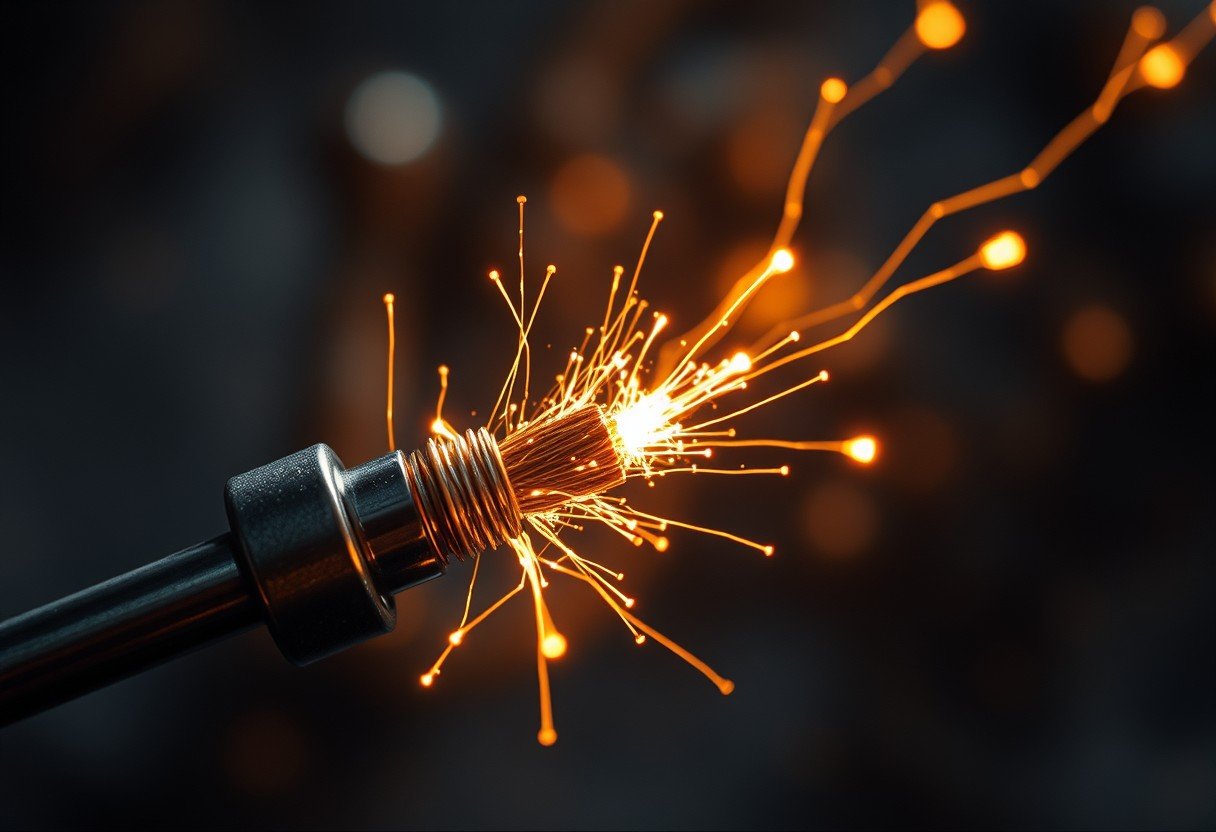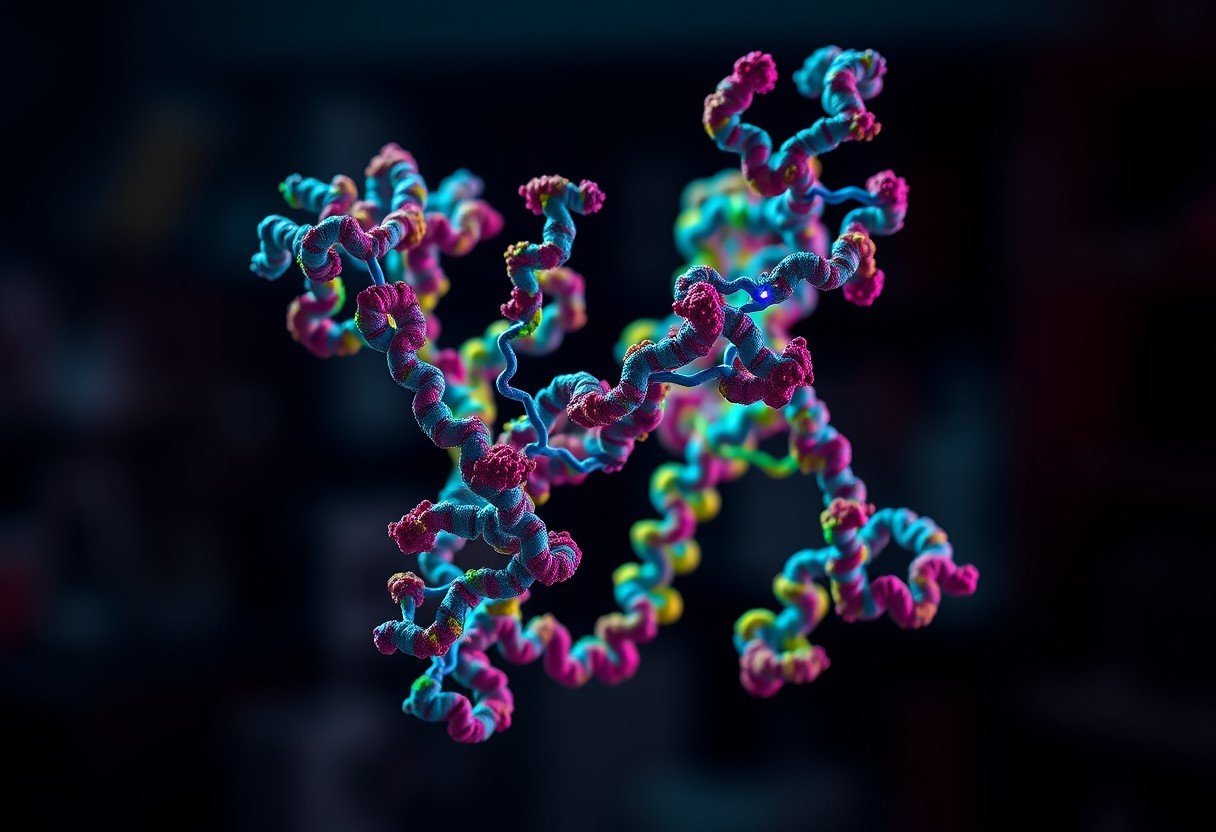Have you ever wondered why we talk about a flow of electrons when discussing electricity in wires, but protons are rarely mentioned? The answer lies in the fundamental structure of atoms and metals. Simply put, electrons are free to move, while protons are locked in place. This freedom of movement allows electrons to travel through a metal wire, carrying an electrical charge and powering our world.
The Basic Players: Electrons and Protons
To understand electrical current, we first need to look at the subatomic particles responsible for charge: electrons and protons. While they have equal but opposite charges, their other properties are vastly different, which dictates the role they play in electricity.
Electrons are tiny, negatively charged particles that orbit the nucleus of an atom. Protons, on the other hand, are much larger, positively charged particles located inside the nucleus. This difference in location is the most critical factor for electrical conduction in metals.
Their masses are also dramatically different. An electron is almost 2,000 times lighter than a proton, making it far easier to move when an external force, like a voltage from a battery, is applied.
| Particle | Charge (Coulombs) | Mass (kg) |
|---|---|---|
| Electron | -1.602 x 10⁻¹⁹ | 9.109 x 10⁻³¹ |
| Proton | +1.602 x 10⁻¹⁹ | 1.673 x 10⁻²⁷ |
Why the Structure of Metals is Key
Metals are excellent conductors of electricity because of their unique atomic arrangement. Atoms in a metal are packed closely together in a regular, repeating pattern called a crystal lattice. This structure is what gives metals their strength and form.
However, the most important feature for conductivity is how their electrons behave. In metals, the outermost electrons are not tightly bound to their individual atoms. Instead, they become delocalized and form what is often called a “sea of free electrons.”
This sea of electrons can move freely throughout the entire metal lattice. The positive metal ions (atoms that have lost electrons) remain fixed in their positions, but the electrons drift among them. When you apply a voltage across a wire, this creates an electric field that easily pushes these free electrons in one direction, creating an electric current.
How Electrons Move through a Wire
The movement of electrons in a wire isn’t a straight, uninterrupted path. Their journey is more like a chaotic stumble through a crowded room. The term for their overall movement in one direction is “drift velocity.”
Even though individual electrons move very fast, they constantly collide with the metal ions and other electrons. These collisions are known as scattering events, and they create resistance to the flow of current. Several factors can affect how much scattering occurs:
- Temperature: Higher temperatures cause the metal ions to vibrate more, increasing the chances of collision and thus increasing resistance.
- Impurities: Foreign atoms within the metal lattice can disrupt the regular structure and act as obstacles for the moving electrons.
- Physical Defects: Bends or imperfections in the wire’s crystal structure can also hinder the flow of electrons.
Despite these obstacles, the sheer number of free electrons in a metal ensures that a significant current can flow efficiently, making them ideal for wiring and electronics.
Why Protons Cannot Carry Current in Metals
The reason protons don’t carry current in a metal wire is straightforward: they are not free to move. Protons are located deep inside the atomic nucleus, held in place by the strong nuclear force, one of the most powerful forces in nature.
Moving a proton would require an enormous amount of energy, enough to break an atom apart. In contrast, the delocalized electrons in a metal require very little energy to be pushed along. Therefore, the fixed position and massive size of protons make them completely unsuitable for carrying charge in solid conductors like metals. The entire framework of the metal wire is built from atoms whose nuclei, containing protons, are stationary.
What This Means for Everyday Technology
The fact that electrons are the primary charge carriers has huge implications for all the technology we use. Circuit designers rely on the predictable and efficient flow of electrons to create everything from simple light switches to complex computer processors.
This principle also dictates our choice of materials. Materials with a large number of free electrons, like copper and aluminum, are used as conductors because they allow electricity to flow easily. Materials with very few free electrons, like plastic and rubber, are used as insulators because they block the flow of electricity, keeping us safe.
Understanding this fundamental behavior allows engineers to design safer, more efficient electrical systems that power our homes, businesses, and devices.
Frequently Asked Questions
Why are electrons the principal charge carriers in metal wires?
Electrons are the main charge carriers because they are lightweight and not tightly bound to any single atom in a metal. This allows them to move freely through the metal’s crystal structure when a voltage is applied, creating an electric current.
What role do protons play in electrical conduction in metals?
Protons play no direct role in electrical conduction in solid metals. They are trapped within the atomic nucleus by the strong nuclear force and are far too massive to move, so they cannot carry charge through the wire.
Are there any materials where protons act as charge carriers?
Yes, while not common in solid wires, protons can act as charge carriers in other types of materials. In certain substances like electrolytes (found in batteries) and some types of fuel cells, protons can move and contribute to electrical conduction.
How does the “sea of electrons” model explain conductivity?
The “sea of electrons” model describes how the outermost electrons in metal atoms are delocalized, or shared among all the atoms. This creates a mobile pool of negative charges that can easily be directed by an electric field, which is why metals conduct electricity so well.
Does temperature affect the movement of electrons in a wire?
Yes, temperature has a major impact. As the temperature of a metal wire increases, its atoms vibrate more intensely. These vibrations get in the way of the moving electrons, causing more collisions and increasing the wire’s electrical resistance.









Leave a Comment